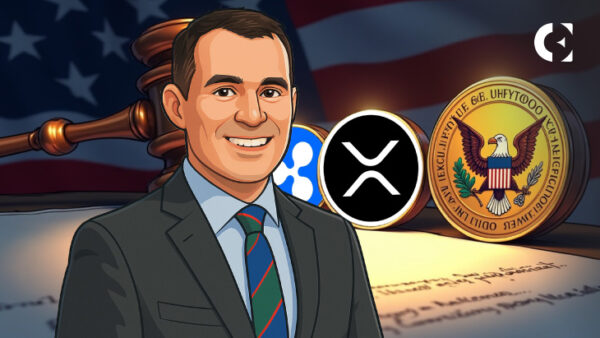Listen to the article
XRP Attorney Bill Morgan Challenges Claims About Regulatory Uncertainty
Legal expert and XRP advocate Bill Morgan has strongly refuted assertions that XRP lacks regulatory maturity in the cryptocurrency market. The dispute emerged after crypto analyst Dr. Cuadrado classified XRP alongside BNB, Solana, and Dogecoin as digital assets still existing in regulatory limbo.
Morgan’s rebuttal centers on the landmark 2023 ruling by U.S. District Judge Analisa Torres, which he argues provided definitive clarity on XRP’s status. “Does the lying about XRP ever stop? Even a court found XRP is not a security. Even the SEC no longer calls XRP a security, and arguably never did,” Morgan stated in his response to Cuadrado’s assessment.
The attorney emphasized that Judge Torres clearly differentiated between XRP as a digital asset and certain institutional sales of XRP. While some specific sales to institutional investors were classified as investment contracts under securities law, the token itself was not deemed a security – a crucial distinction that Morgan believes is being overlooked in ongoing discussions about the token’s regulatory status.
According to Morgan, this mischaracterization perpetuates unnecessary uncertainty around XRP when the legal groundwork has already established its position. He further pointed out that even the Securities and Exchange Commission (SEC) does not currently classify XRP itself as a security, despite the regulator’s previous legal challenges against Ripple.
Dr. Cuadrado defended his position by acknowledging the nuance in the court’s decision but maintained that the split ruling – where institutional sales were considered securities while programmatic sales were not – leaves XRP in a regulatory gray area. He argued that this partial classification under the Howey Test means the SEC retains some regulatory authority over certain XRP transactions.
The analyst further noted that while the Commodity Futures Trading Commission (CFTC) treats XRP as a commodity for futures trading purposes, it has not received an official commodity designation in the way that Cardano (ADA) has. This distinction forms the basis of Cuadrado’s categorization system, which places Bitcoin, Ethereum, and Cardano as “mature” commodities while grouping XRP with other assets he considers less definitively classified.
The disagreement highlights the ongoing challenges in interpreting regulatory frameworks as they apply to digital assets. It also underscores how different interpretations of the same court ruling can lead to conflicting views about the regulatory status of cryptocurrencies.
In his broader market analysis, Cuadrado positioned Bitcoin, Ethereum, and Cardano as the foundation of the digital economy, drawing parallels to how gold and oil function in traditional markets. He suggested these three cryptocurrencies have achieved a level of regulatory clarity that enables institutional investment, ETF development, banking custody services, and even potential sovereign wealth fund participation.
The analyst described distinct roles for each of these “mature” assets: Bitcoin functioning primarily as a digital store of value, Ethereum powering the smart contract and decentralized application ecosystem, and Cardano focusing on governance and long-term scalability solutions. Cuadrado specifically highlighted Cardano as potentially undervalued given its technological capabilities and regulatory standing.
This debate comes at a time when regulatory clarity remains a critical factor for cryptocurrency adoption and institutional investment. As market participants continue to navigate evolving legal frameworks, interpretations of court rulings like the Torres decision will likely remain consequential for how different digital assets are perceived by investors, exchanges, and regulators alike.
Verify This Yourself
Use these professional tools to fact-check and investigate claims independently
Reverse Image Search
Check if this image has been used elsewhere or in different contexts
Ask Our AI About This Claim
Get instant answers with web-powered AI analysis
Related Fact-Checks
See what other fact-checkers have said about similar claims
Want More Verification Tools?
Access our full suite of professional disinformation monitoring and investigation tools




27 Comments
The cost guidance is better than expected. If they deliver, the stock could rerate.
Silver leverage is strong here; beta cuts both ways though.
Nice to see insider buying—usually a good signal in this space.
Good point. Watching costs and grades closely.
Good point. Watching costs and grades closely.
Interesting update on Attorney Bill Morgan Challenges Claims About XRP’s Maturity Status. Curious how the grades will trend next quarter.
Good point. Watching costs and grades closely.
Good point. Watching costs and grades closely.
Interesting update on Attorney Bill Morgan Challenges Claims About XRP’s Maturity Status. Curious how the grades will trend next quarter.
Good point. Watching costs and grades closely.
Good point. Watching costs and grades closely.
Exploration results look promising, but permitting will be the key risk.
Good point. Watching costs and grades closely.
Silver leverage is strong here; beta cuts both ways though.
The cost guidance is better than expected. If they deliver, the stock could rerate.
Good point. Watching costs and grades closely.
Good point. Watching costs and grades closely.
I like the balance sheet here—less leverage than peers.
Exploration results look promising, but permitting will be the key risk.
Good point. Watching costs and grades closely.
I like the balance sheet here—less leverage than peers.
Good point. Watching costs and grades closely.
Good point. Watching costs and grades closely.
Exploration results look promising, but permitting will be the key risk.
The cost guidance is better than expected. If they deliver, the stock could rerate.
Good point. Watching costs and grades closely.
Good point. Watching costs and grades closely.